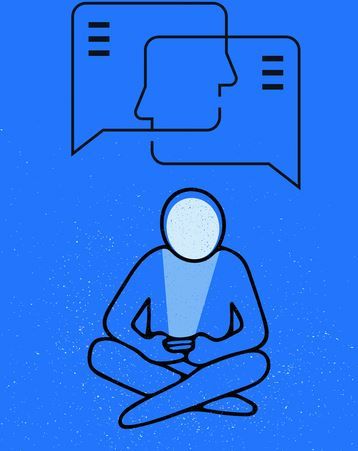News
Article
An Update on Bipolar I Disorder
Author(s):
Our Mood Disorders Section Editor discusses the disorder in honor of World Bipolar Day.
FreshIdea_AdobeStock

CLINICAL CONVERSATIONS
March 30, 2024, is World Bipolar Day. Psychiatric Times® sat down with our Mood Disorders Section Editor Gustavo Alva, MD, DFAPA, to discuss bipolar I disorder—its clinical characteristics, its impact on patients’ lives, and the future of treatment.
Psychiatric Times: What is the prevalence of bipolar I disorder in the United States?
Gustavo Alva, MD, DFAPA: Bipolar I disorder, or BP-I, is one of the most severe and common forms of bipolar disorder,1 affecting nearly 4.8 million American adults.2 The prevalence of adults affected by BP-I makes it so important to foster an open dialogue surrounding this condition to empower those struggling to seek proper care and treatment from a health care professional.
World Bipolar Day on March 30 represents an opportunity to encourage awareness and increase education and conversations surrounding bipolar disorder with hopes of eliminating the social stigma associated with this condition.
PT: What are the risk factors for the development of bipolar I disorder?
Alva: There are many factors that contribute to an individual’s chance of having BP-I. Research shows that genetics play a role: Those who have a first-degree relative, such as a parent or sibling,3 with BP-I are more at risk for developing the disorder. Periods of high stress, traumatic events, or substance abuse can also increase the risk of developing BP-I or act as a trigger for the first episode.4
Some studies also suggest that individuals with bipolar have brains that may be structured and function differently3 than those without bipolar, and those with other mental health disorders.
PT: How does bipolar I disorder impact the day-to-day lives of individuals with the disorder?
Alva: BP-I is a recurrent, lifelong mood disorder that results in functional and cognitive impairment, which is characterized by recurrent manic and depressive episodes that may last weeks or even months. BP-I patients may face periods of unusually intense emotions and changes in sleep patterns and activity levels,3 all of which can negatively impact an individual's daily life.
Those diagnosed with BP-I tend to experience functional and cognitive impairment5 that, understandably, can impact daily life. However, patients with BP-I who are stable on their prescribed treatment, along with support and self-care, can still lead healthy, fulfilling lives.6
PT: What treatment options are currently available for bipolar I disorder?
Alva: There are many treatment options available for patients with BP-I, and the multitude of options is important because not every patient is the same. Treatment types and plans that work for some individuals may not work for others, depending on their lifestyle, schedule, occupation, family, and more.
Treatments typically revolve around pharmacological options, mainly medications prescribed by a health care provider, and psychological options, including different forms of therapy.3 In addition to daily oral pills or tablets, long-acting injectables (LAIs)are another form of medication that can last for an extended period with just 1 dose.7
It is important to keep in mind when evaluating options that there is no one-size-fits-all approach to treatment, so working closely with a health care professional to identify which treatment and management options work best for the patient is a crucial first step toward achieving stability.
PT: Are there any potential treatments on the horizon or in development that may impact the future of treatment?
Alva: In my practice, I have found that LAIs can be beneficial in managing BP-I disorder in patients who are already stable. LAIs are administered by a health care professional and provide continuous delivery of antipsychotic medication to help maintain appropriate blood levels of that medication, offering an additional treatment option to maintain stability for patients living with bipolar I disorder.
Because LAIs are administered differently and less frequently than daily oral medications, they allow one less daily disruption, while reducing the reminder of the disease every day.
Taking medication as prescribed is easier said than done, which is why LAIs are changing the conversation surrounding treatment. Of those diagnosed with bipolar disorder, about half have issues with their treatment plans long-term.8
Considering that 90% of individuals with bipolar disorder experience recurrences during their lifetime,9 arriving at a long-term treatment plan can be pivotal. I encourage all patients and their caregivers to speak with their health care professionals about the treatments available to them, to determine if an LAI is the right fit for them and their lifestyles.
For more information, I would recommend visiting www.otsukapatiented.com/mental-health.
Dr Alva is a board-certified psychiatrist, a paid consultant of Otsuka America Pharmaceutical, Inc, and Lundbeck, and Mood Disorders Section Editor for Psychiatric Times.
References
1. Datto C, Pottorf WJ, Feeley L, et al. Bipolar II compared with bipolar I disorder: baseline characteristics and treatment response to quetiapine in a pooled analysis of five placebo-controlled clinical trials of acute bipolar depression. Ann Gen Psychiatry. 2016;15:9.
2. Blanco C, Compton WM, Saha TD, et al. Epidemiology of DSM-5 bipolar I disorder: results from the National Epidemiologic Survey on Alcohol and Related Conditions—III. J Psychiatr Res. 2017;84:310-317.
3. What is bipolar disorder? National Institute of Mental Health. Last reviewed February 2024. Accessed March 4, 2024. https://www.nimh.nih.gov/health/topics/bipolar-disorder#part_2260
4. Bipolar disorder: overview. Mayo Clinic. December 13, 2022. Accessed March 4, 2024. https://www.mayoclinic.org/diseases-conditions/bipolar-disorder/symptoms-causes/syc-20355955
5. Bonnín CDM, Reinares M, Martínez-Arán A, et al. Improving functioning, quality of life, and well-being in patients with bipolar disorder. Int J Neuropsychopharmacol. 2019;22(8):467-477.
6. Bipolar disorder. Substance Abuse and Mental Health Services Administration. Last updated April 24, 2023. Accessed March 4, 2024. https://www.samhsa.gov/mental-health/bipolar
7. Johnson K. What you need to know about long-acting injectables (LAIs). American Association of Psychiatric Pharmacists. 2022. Accessed March 4, 2024. https://www.nami.org/NAMI/media/NAMI-Media/Research/Long-Acting-Injectables_2022.pdf
8. Chou JC. Treatment-resistant bipolar disorder. Psychiatric Times. July 6, 2011. Accessed March 4, 2024. https://www.psychiatrictimes.com/view/treatment-resistant-bipolar-disorder
9. Leelahanaj T, Kongsakon R, Choovanichvong S, et al. Time to relapse and remission of bipolar disorder: findings from a 1-year prospective study in Thailand. Neuropsychiatr Dis Treat. 2013;9:1249-1256.
Newsletter
Receive trusted psychiatric news, expert analysis, and clinical insights — subscribe today to support your practice and your patients.






